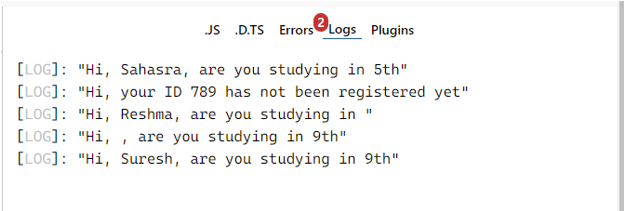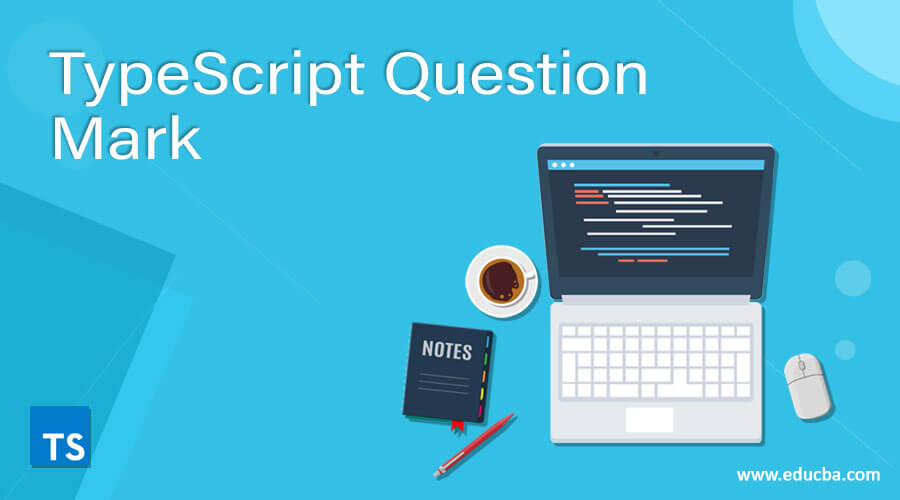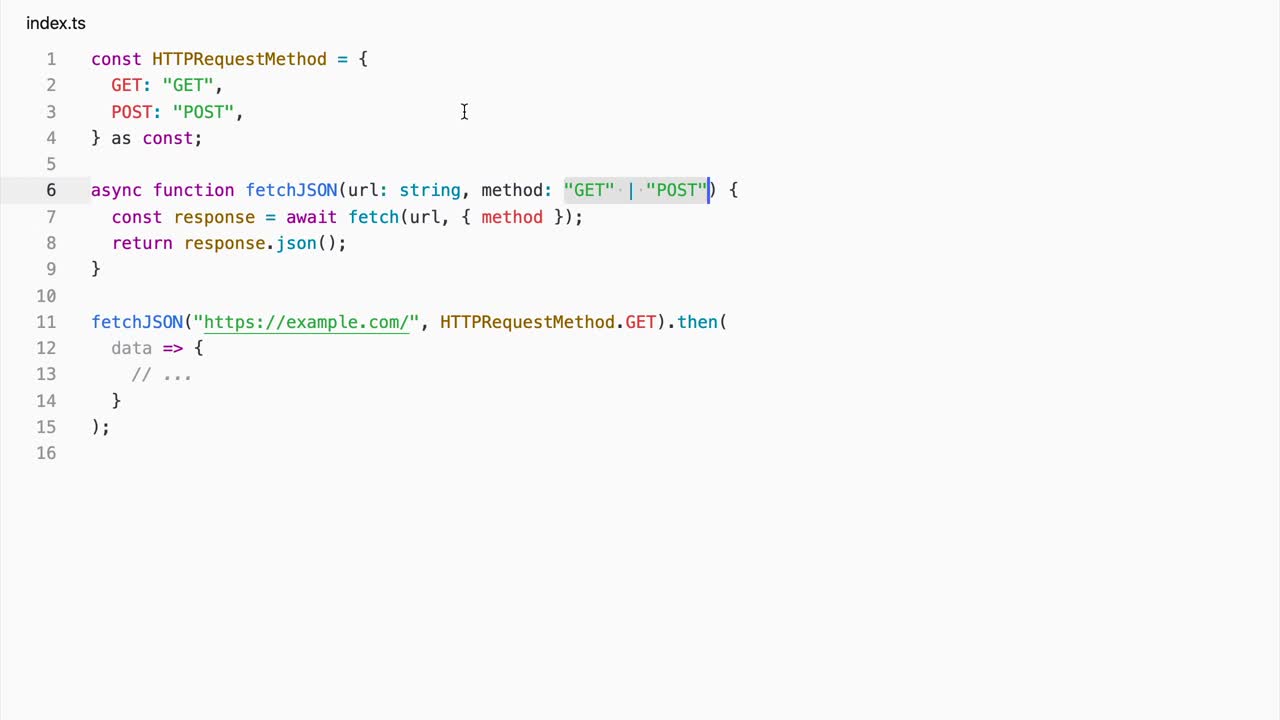Typescript Double Question Mark
The double question mark operator, also known as the nullish coalescing operator, is a feature introduced in TypeScript 3.7 to provide a concise and readable way to handle nullish values. It is denoted by two question marks (“??”) and can be used to provide a default value when a variable is null or undefined.
Using the double question mark operator for nullish coalescing
The primary use of the double question mark operator is for nullish coalescing. Nullish coalescing allows you to specify a default value for a variable if it is null or undefined. The double question mark operator returns the right-hand side value if the left-hand side value is null or undefined, otherwise it returns the left-hand side value.
For example, consider the following code snippet:
“`typescript
let name = null;
let displayName = name ?? “Unknown”;
console.log(displayName); // Output: “Unknown”
“`
In this example, the variable `name` is null, so the double question mark operator returns the default value “Unknown” and assigns it to the variable `displayName`.
Understanding the difference between nullish coalescing and default parameter values
It is important to note that nullish coalescing using the double question mark operator is different from default parameter values in JavaScript and TypeScript. Default parameter values use the equals sign (“=”) to specify a default value for a function parameter, whereas nullish coalescing uses the double question mark operator to handle null or undefined values of variables.
Handling optional properties with the double question mark operator
The double question mark operator can also be used to handle optional properties in TypeScript. When accessing optional properties, instead of using a series of conditional checks, you can use the double question mark operator to provide a default value. This helps to write cleaner and more concise code.
Consider the following example:
“`typescript
interface Person {
name?: string;
age?: number;
}
function getPersonName(person: Person): string {
return person.name ?? “Unknown”;
}
const person1: Person = { name: “John” };
const person2: Person = { age: 25 };
console.log(getPersonName(person1)); // Output: “John”
console.log(getPersonName(person2)); // Output: “Unknown”
“`
In this example, the `Person` interface has optional properties `name` and `age`. The `getPersonName` function uses the double question mark operator to provide a default value of “Unknown” if the `name` property is missing or null.
Chaining multiple double question mark operators for deep property access
The double question mark operator can be chained together for deep property access. This allows you to handle nullish values in nested objects or arrays easily.
Consider the following example:
“`typescript
const user = {
details: {
name: “John”,
age: 25,
address: {
city: “New York”,
postalCode: “12345”,
},
},
};
let city = user.details.address?.city ?? “Unknown”;
let country = user.details.address?.country ?? “Unknown”;
console.log(city); // Output: “New York”
console.log(country); // Output: “Unknown”
“`
In this example, the double question mark operator is used to access the `city` property of the `address` object in the `user` object. If any of the intermediate properties are null or undefined, the operator returns the default value “Unknown”.
Caveats and limitations of using the double question mark operator
Although the double question mark operator provides a convenient way to handle nullish values, it has some caveats and limitations that developers should be aware of.
Firstly, the double question mark operator only checks for null or undefined values. It does not handle other falsy values such as empty strings, zero, or false. If you need to handle all falsy values, you should use other methods such as the logical OR operator (“||”).
Secondly, the double question mark operator has a lower precedence than most other operators. This means that when using it with other operators, you may need to use parentheses to ensure the desired evaluation order.
Finally, it’s important to understand that the double question mark operator is a TypeScript feature and may not be available in all JavaScript environments. If you are targeting environments that do not support TypeScript or ECMAScript 2020, you may need to use alternative approaches or transpile your code to a compatible version.
Best practices for using the double question mark operator effectively in TypeScript
When using the double question mark operator in TypeScript, there are some best practices to keep in mind to ensure efficient and readable code.
Firstly, use the double question mark operator sparingly and only when it adds clarity to your code. In some cases, explicit null checks or conditional statements may be more appropriate for handling nullish values.
Secondly, consider explicitly specifying the type of the variable or property when using the double question mark operator. This helps to ensure type safety and avoid unexpected behavior.
Lastly, consider using the double question mark operator with optional chaining (the question mark before the dot) for even more robust handling of nullish values. This combination allows you to safely access deep properties without risking undefined errors.
In conclusion, the double question mark operator in TypeScript provides a concise and readable way to handle nullish values and provide default values. By understanding its capabilities and limitations, developers can utilize it effectively to write cleaner and more robust code.
FAQs:
Q: What is the purpose of the double question mark operator in TypeScript?
A: The double question mark operator, known as nullish coalescing operator, is used to provide a default value for a variable if it is null or undefined.
Q: How is nullish coalescing different from default parameter values?
A: Nullish coalescing using the double question mark operator handles null or undefined values of variables, whereas default parameter values in JavaScript and TypeScript use the equals sign to specify a default value for a function parameter.
Q: Can the double question mark operator handle optional properties in TypeScript?
A: Yes, the double question mark operator can be used to handle optional properties by providing a default value if the property is missing or null.
Q: Can the double question mark operator be chained for deep property access?
A: Yes, the double question mark operator can be chained together for deep property access, allowing you to handle nullish values in nested objects or arrays.
Q: What are some caveats of using the double question mark operator?
A: The double question mark operator only checks for null or undefined values, and has a lower precedence than most other operators. It is also a TypeScript feature and may not be available in all JavaScript environments.
Q: What are some best practices for using the double question mark operator effectively?
A: Use the double question mark operator sparingly, explicitly specify the type of the variable or property, and consider using it with optional chaining for more robust handling of nullish values.
Nullish Coalescing Operator – Javascript Tutorial
What Does 2 Question Marks Mean In Typescript?
TypeScript is a superset of JavaScript, which means it includes all the functionalities of JavaScript along with additional features. One such feature is the introduction of null and undefined checks. These checks are important in programming as they help catch potential errors and undefined values. TypeScript provides different ways to handle null and undefined values, and one of them is using the double question mark (??) operator.
The double question mark operator is used to provide a default value when a value is null or undefined. It is also known as the nullish coalescing operator. This operator is typically used in situations where you want to assign a fallback value to a variable if the original value is null or undefined.
Let’s understand this with an example:
“`typescript
let name: string | null = null;
let displayName = name ?? “Guest”;
console.log(displayName); // Output: Guest
“`
In the above code, we have a variable called `name` which is assigned a value of null. When we try to assign the value of `name` to `displayName` using the double question mark operator, it checks if `name` is null or undefined. Since `name` is null, the operator assigns the fallback value “Guest” to `displayName`. As a result, the output of `console.log(displayName)` is “Guest”.
When should you use the double question mark operator?
The double question mark operator is especially useful when you are working with variables that can potentially be null or undefined. Instead of explicitly checking and assigning a default value, you can use the double question mark operator to simplify your code.
The operator checks if the value on the left-hand side is null or undefined. If it is, it assigns the value on the right-hand side as a fallback. Otherwise, it assigns the original value. This can be particularly handy when working with API responses, user inputs, or any situation where a value may be missing.
Frequently Asked Questions (FAQs):
Q: What is the difference between the double question mark operator (??) and the logical OR operator (||)?
A: The logical OR operator (||) in JavaScript doesn’t differentiate between falsy values (such as empty strings, 0, or false) and null or undefined values. It considers all falsy values as false. On the other hand, the double question mark operator (??) only checks for null or undefined values.
Q: Can I use the double question mark operator with TypeScript’s strictNullChecks option enabled?
A: Yes, you can. TypeScript’s strictNullChecks option allows you to enforce strict null value checking. The double question mark operator aligns with strictNullChecks and can be safely used to handle null and undefined values.
Q: Can I use the double question mark operator with non-null assertion operator (!) in TypeScript?
A: No, using the double question mark operator with the non-null assertion operator is not recommended. The non-null assertion operator (!) overrides strictNullChecks and tells TypeScript to assume the value is not null or undefined, which contradicts the purpose of the double question mark operator.
Q: Are there any alternatives to the double question mark operator for handling null or undefined values in TypeScript?
A: Yes, TypeScript provides other mechanisms to handle null or undefined values such as conditional statements, ternary operators, and optional chaining. The choice of operator or mechanism depends on the specific use case and personal preference.
In conclusion, the double question mark (??) operator in TypeScript provides a convenient way to handle null or undefined values and assign default fallbacks. It simplifies code and allows you to handle potentially missing values more effectively. Understanding and using this operator can greatly enhance your TypeScript programming skills.
What Does 2 Question Marks Mean In Javascript?
In JavaScript, the double question marks (??) are referred to as the nullish coalescing operator. Introduced in ECMAScript 2020, this operator provides a concise and effective way to handle values that may be null or undefined. It is particularly useful when assigning default values or determining if a value exists.
How Does the Nullish Coalescing Operator Work?
The nullish coalescing operator evaluates the expression on its left side. If the result is null or undefined, it returns the expression on the right side. Otherwise, it returns the value on the left side. The key distinction is that the operator checks for null or undefined specifically, rather than falsy values like empty strings, 0, or false.
Here’s a simple example to illustrate this behavior:
“`javascript
const value = null ?? “default”;
console.log(value); // output: “default”
“`
In this case, the variable `value` is assigned the value “default” because the left side expression, null, is considered nullish.
Let’s examine another example:
“`javascript
const userInput = undefined;
const message = userInput ?? “Value not provided”;
console.log(message); // output: “Value not provided”
“`
In this example, the variable `userInput` is undefined. As a result, the nullish coalescing operator returns the right-side expression, “Value not provided”.
It’s worth noting that the nullish coalescing operator has a lower precedence than the logical OR operator (||). This means that when used together, the nullish coalescing operator will only be considered when the left-hand expression is null or undefined, while the logical OR operator will evaluate any falsy value. This distinction can be essential, especially when dealing with string values that evaluate to false.
“`javascript
const name = “”;
const displayName = name || “Anonymous”;
console.log(displayName); // output: “Anonymous”
const displayNameWithCoalescing = name ?? “Anonymous”;
console.log(displayNameWithCoalescing); // output: “”
“`
In this example, the variable `name` is an empty string. When evaluating with the logical OR operator, it is considered falsy, and “Anonymous” is assigned to `displayName`. However, when using the nullish coalescing operator, `displayNameWithCoalescing` remains an empty string since the nullish coalescing operator only returns the right-side expression when the left side is null or undefined.
Frequently Asked Questions (FAQs)
Q: What is the difference between the nullish coalescing operator (??) and the ternary operator (?:)?
The nullish coalescing operator provides a concise way to handle null or undefined values. On the other hand, the ternary operator allows for conditional expressions. While they may seem similar, the contexts in which they are used differ. The nullish coalescing operator assigns default values, while the ternary operator chooses between different values based on a condition.
Q: Can the nullish coalescing operator be used with other data types besides null and undefined?
No, the nullish coalescing operator specifically checks for null or undefined values. It does not consider other falsy values like empty strings, 0 or false.
Q: Is the nullish coalescing operator supported in all JavaScript environments?
The nullish coalescing operator was introduced in ECMAScript 2020. Therefore, older browsers and environments that do not support this ECMAScript version may not recognize the operator. It is always recommended to check the compatibility of new JavaScript features with the target environment.
Conclusion
The double question marks (??) in JavaScript represent the nullish coalescing operator. This operator is a convenient way to assign default values or handle null or undefined values. By combining the nullish coalescing operator with other logical operators, developers can create powerful and concise code that improves readability and reduces the potential for errors. Remember to consider browser compatibility if using this operator in production code.
Keywords searched by users: typescript double question mark typescript double type, typescript single question mark, typescript question mark, TypeScript question mark operator, Double question mark, Double question mark js, typescript double number, typescript double exclamation mark before variable
Categories: Top 46 Typescript Double Question Mark
See more here: nhanvietluanvan.com
Typescript Double Type
What is the double type in TypeScript?
The double type, also known as double-precision floating-point numbers, is a data type that represents real numbers with a large range of values. It is a 64-bit floating-point value and follows the IEEE 754 standard for representing floating-point numbers. This type allows for a greater level of precision compared to the number type in JavaScript.
Using the double type in TypeScript:
In TypeScript, the double type is a built-in type that represents decimal numbers. It can be declared explicitly or inferred by the compiler when a variable is assigned a decimal value. For example:
“`
let x: number = 3.14159;
let y = 2.71828; // Compiler infers y as type number
“`
Operations on double types in TypeScript are similar to those performed on regular JavaScript numbers. Arithmetic operations like addition, subtraction, multiplication, and division can be performed directly on double values:
“`typescript
let a: number = 10.5;
let b: number = 2.5;
let sum = a + b;
let difference = a – b;
let product = a * b;
let quotient = a / b;
console.log(sum); // Output: 13
console.log(difference); // Output: 8
console.log(product); // Output: 26.25
console.log(quotient); // Output: 4.2
“`
Additionally, the double type in TypeScript provides additional methods and properties to carry out specific operations or retrieve information about a double value. Examples of such methods include `toFixed()` for specifying the number of decimal places, `toExponential()` to represent a number in exponential notation, and `toPrecision()` for rounding a number to a specified precision.
“`typescript
let pi: number = 3.14159;
console.log(pi.toFixed(2)); // Output: 3.14
console.log(pi.toExponential(4)); // Output: 3.1416e+0
console.log(pi.toPrecision(3)); // Output: 3.14
“`
Frequently Asked Questions:
Q: Can I assign an integer value to a double type in TypeScript?
A: Yes, TypeScript treats integer values as a subtype of the double type. You can assign an integer to a double variable without any explicit typecasting.
Q: What is the difference between the number and double types in TypeScript?
A: The number type in TypeScript represents both integer and floating-point numbers, whereas the double type specifically refers to the 64-bit floating-point values, adhering to the IEEE 754 standard.
Q: Are there any limitations when working with the double type?
A: Double precision floating-point numbers have limited precision due to the underlying binary representation. This means that certain decimal values cannot be represented exactly and may result in small rounding errors.
Q: Can I compare double values for equality in TypeScript?
A: It is generally not recommended to compare floating-point numbers for equality due to precision limitations. It is better to compare within an acceptable range using methods like `Math.abs()` or round to a specific precision.
Q: Can I use the double type with arrays or objects in TypeScript?
A: Yes, you can use the double type as elements of arrays or properties of objects just like any other TypeScript type.
In conclusion, the double type in TypeScript provides developers with a more precise way to work with decimal numbers. Its ability to handle a wide range of values and perform various mathematical operations makes it a valuable addition to any TypeScript project. By understanding its usage and potential limitations, developers can make full use of the double type’s capabilities in their programs.
Typescript Single Question Mark
TypeScript, a superset of JavaScript, has gained remarkable popularity among developers due to its ability to enable static typing and catch errors at the development stage. One of the language’s intriguing features is the single question mark operator, denoted by “?”. It offers developers a versatile tool for handling undefined or nullable values in a concise and expressive manner. In this article, we will explore the various uses and best practices associated with the single question mark operator in TypeScript.
Understanding the Single Question Mark Operator:
The single question mark operator is known as the optional chaining operator. It allows access to properties or methods on an object, even if they are potentially undefined or null. This operator effectively short-circuits the evaluation when it encounters an undefined or null value, preventing errors related to attempting to read or call a property or method on such values.
In TypeScript, when a property or method is accessed using the single question mark operator, the resulting type includes both the original type of the accessed property/method and the possibility of “undefined”. This extends the type system of TypeScript and provides a more precise representation of potential nullable values.
Let’s explore some common use cases for the single question mark operator:
1. Object Property Access:
const person = {
name: “John”,
age: 25,
};
console.log(person.name); // Prints “John”
console.log(person?.address?.city); // Prints “undefined”
In the code snippet above, accessing the “name” property works as expected. However, using the optional chaining operator while accessing the non-existent “address” property does not throw an error but instead returns “undefined”. This avoids the need for additional conditionals to check for the existence of properties at each level before accessing nested properties.
2. Function Call:
function greet() {
return “Hello, world!”;
}
console.log(greet?.()); // Prints “Hello, world!”
console.log(greet2?.()); // Prints “undefined”
In this example, we see that using the single question mark operator with a function call allows for gracefully handling undefined or null functions. If the function exists, it is called and its value is returned. Otherwise, the result is “undefined”. This can be particularly useful when dealing with optional callback functions or cases where a function may not be defined.
3. Array Element Access:
const numbers = [1, 2, 3];
console.log(numbers?.[0]); // Prints “1”
console.log(numbers2?.[0]); // Prints “undefined”
Similarly, when accessing array elements using the single question mark operator, it prevents errors when accessing non-existent or undefined elements. Instead, it returns “undefined” as the result.
Frequently Asked Questions (FAQs):
Q1. What happens if there is a chain of properties and one of them is undefined?
If any intermediate property or method in a chain is undefined, the evaluation of the chain stops, and the result is immediately set to “undefined”.
Q2. Is the optional chaining operator limited to TypeScript only?
No, the optional chaining operator is part of the ECMAScript proposal (Stage 4) and is supported by modern JavaScript engines. However, TypeScript provides additional static typing benefits related to the single question mark operator.
Q3. Can I use the single question mark operator with method calls that require parameters?
No, the single question mark operator is unable to handle method calls that require parameters. It is primarily designed for accessing properties or calling functions without arguments.
Q4. Can I use the single question mark operator with custom types or interfaces?
Yes, the single question mark operator can be used with custom types or interfaces in TypeScript. It behaves similarly to built-in types, allowing you to handle nullable properties or methods without generating compilation errors.
Q5. Are there any performance implications when using the single question mark operator?
Using the optional chaining operator incurs a slight performance penalty due to the additional checks involved. However, the impact is typically negligible, and the benefits it provides in terms of code readability and robustness outweigh the minimal performance cost.
In conclusion, the TypeScript single question mark operator offers developers a powerful tool for gracefully handling undefined or nullable values. It simplifies code, prevents errors, and enhances the overall robustness of applications. By utilizing this operator effectively, developers can write concise and expressive code while ensuring type safety.
Typescript Question Mark
TypeScript is a strongly typed superset of JavaScript that allows developers to write more structured and scalable code. One feature that sets TypeScript apart from its predecessor is the extensive use of type annotations. These annotations help developers catch errors before runtime, thereby enhancing code maintainability and reliability. One such annotation is the question mark, which we will explore in detail in this article.
What is the question mark in TypeScript?
In TypeScript, the question mark is used to denote optional properties or parameters in objects and functions, respectively. When a property or parameter is marked as optional with the question mark, it means that it can have a value of `undefined` or the specified type. This flexibility provides developers with a powerful tool to handle different scenarios where a value may or may not be present.
Syntax and Usage
The question mark is placed after the property or parameter’s name in the declaration. For example, let’s consider the following TypeScript interface:
“`typescript
interface Person {
name: string;
age?: number;
}
“`
In this interface, the property `name` is mandatory, meaning it must have a value of type `string`. The property `age`, on the other hand, is marked as optional using the question mark. This means that `age` can have a value of `number` or `undefined`. Here’s how the `Person` interface can be used:
“`typescript
const john: Person = {
name: “John”,
age: 25
};
const jane: Person = {
name: “Jane”
};
“`
In the above example, both `john` and `jane` are valid instances of the `Person` interface. While `john` includes the `age` property with a value of `25`, `jane` doesn’t include it at all. This flexibility allows developers to define different shapes of objects without mandating values for every property.
Frequently Asked Questions
Q: What happens if an optional property is not provided a value?
A: If an optional property is not assigned a value, it defaults to `undefined`. You can explicitly assign a value of `undefined` as well if needed.
Q: Can I use the question mark in function parameters?
A: Absolutely! In function declarations, the question mark is used to denote optional parameters. For example:
“`typescript
function greet(name: string, age?: number) {
if (age) {
console.log(`Hello ${name}, you are ${age} years old!`);
} else {
console.log(`Hello ${name}!`);
}
}
“`
Now, calling the `greet` function without providing an `age` parameter is valid. The absence of the `age` argument inside the function body would result in `undefined`, allowing conditional logic to handle the absence of the optional parameter gracefully.
Q: Can I make multiple properties optional using the question mark?
A: Yes, you can make multiple properties optional by placing the question mark after each property name. For example:
“`typescript
interface Configuration {
host?: string;
port?: number;
timeout?: number;
}
“`
In the above example, all properties (`host`, `port`, and `timeout`) are optional and can be omitted when defining an instance of the `Configuration` interface.
Q: Are there any performance considerations for using optional properties or parameters?
A: The use of optional properties or parameters doesn’t have a significant impact on runtime performance. TypeScript’s type checking is performed during the compilation process, and by the time JavaScript is executed, optional properties are resolved to either `undefined` or the specified type.
Q: Can I use the question mark with primitive types in TypeScript?
A: No, the question mark is used specifically for optional object properties or function parameters. It cannot be used with primitive types like `string`, `number`, `boolean`, etc.
Conclusion
The question mark in TypeScript provides developers with a powerful mechanism to define optional properties and parameters. By allowing values of `undefined` or the specified type, developers can build more flexible and robust applications. Understanding the syntax and proper usage of the question mark is essential to write well-structured TypeScript code. Happy coding!
Images related to the topic typescript double question mark

Found 15 images related to typescript double question mark theme





















Article link: typescript double question mark.
Learn more about the topic typescript double question mark.
- TypeScript – Double Question Marks (??) Explained – Ciphertrick
- How To Use The Double Question Mark Operator In TypeScript?
- Double Question Marks TypeScript 3.7 – Nullish Coalescing
- TypeScript | Double Question Marks (??) – What it Means
- Double double questionmarks in TypeScript – Stack Overflow
- How To Use The Double Question Mark Operator In TypeScript?
- What is JavaScript double question mark (??) – nullish coalescing …
- Use of the Exclamation Mark in TypeScript | Syncfusion Blogs
- The JavaScript ?? (Nullish Coalescing) Operator: How Does it Work?
- TypeScript Double Question Mark: What Does It Mean And …
- Double Question Marks(??) or Nullish coalescing Operator in …
- What is Double Question Mark (??) in TypeScript? – Lightly IDE
- JavaScript double question mark vs double pipe | Code
See more: https://nhanvietluanvan.com/luat-hoc